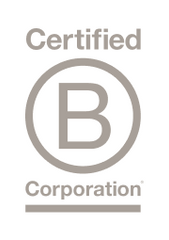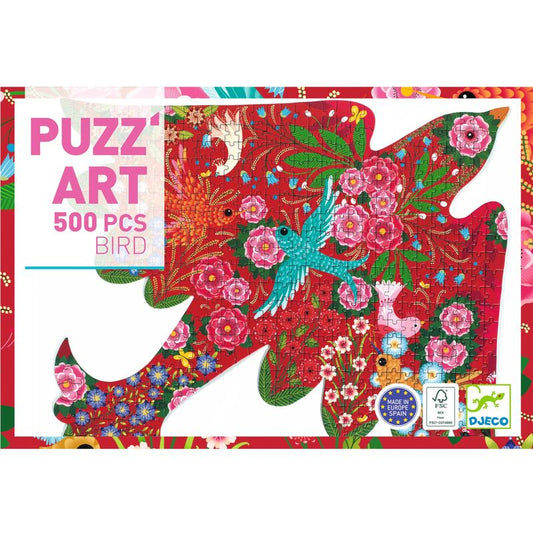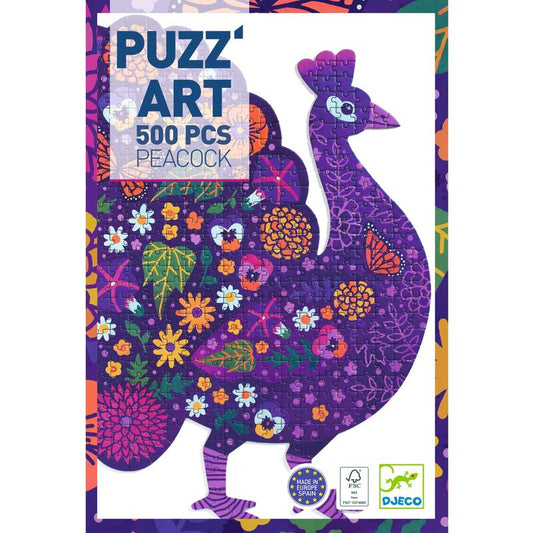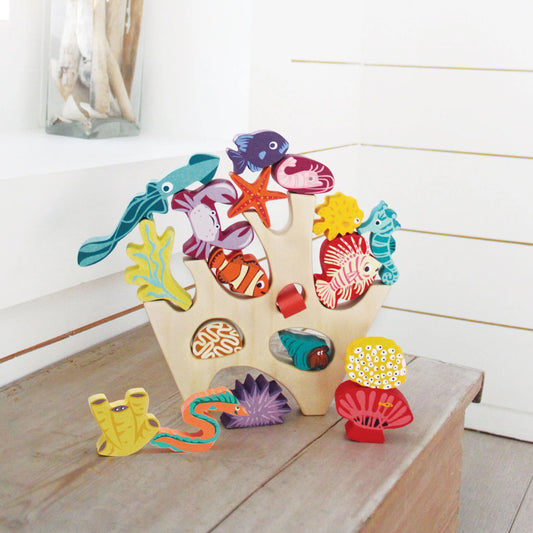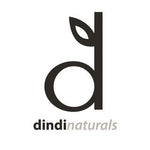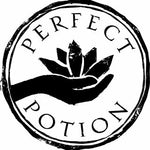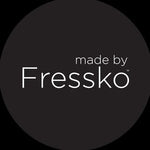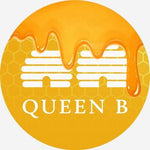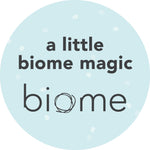 Above: Just some of our favourite palm oil free products at Biome. 1. Clean Conscience cleaning range 2. Mokosh skin care 3. Beauty & the Bees skincare 4. Pure & Green skincare 5. Dindi soap range Biome does not sell products containing palm oil or its derivatives because of the associated habitat destruction and threat to endangered species (except for some products in the Inika and Sante makeup ranges). We do not believe “sustainable palm oil” is a trustworthy alternative (read why below) therefore we still stay away from "sustainable palm oil". We only stock products that provide full ingredient disclosure, including the specific plant oil contained in the product - we do not accept simply "plant-based surfactant" or "vegetable oil". What is palm oil? Palm oil is an edible plant oil from the fruit of the African oil palm (Elaeis guneensis). The bulk of palm oil demand is created by the food industry (an estimated 40% of food found on our supermarket shelves contains palm oil). Commonly used as a cooking oil, palm oil is often the main ingredient in margarines and found in confectionary, ice cream and ready-to-eat meals. It is a base for many detergents, soaps, shampoos, lipstick, waxes and polishes. Palm oil is also used as an industrial lubricant and increasingly, as a biofuel (despite evidence it may actually increase greenhouse emissions). 90% of oil palm is produced from large plantations in Indonesia and Malaysia. Its versatility, high oil yield and relative cost has increasingly seen palm oil replace animal and other vegetable oils in a wide variety of products. It now currently makes up 35% of vegetable oil production worldwide (35 million tons). Global production of palm oil has doubled over the last decade and is expected to double again by 2020. What is the issue about palm oil? The most serious side effect of the growing popularity of palm oil is the removal of forest to make space for oil palm monoculture in Indonesia and Malaysia. The equivalent of 300 football fields are deforested every hour for palm oil production. This is causing major habitat destruction and threatening many species in these areas. Notably, deforestation due to palm oil is considered the single biggest threat facing Orangutans, and is directly implicated in the deaths of an estimated 50 per week. What about “sustainable” palm oil? We are often told by potential suppliers that they use "sustainable” palm oil. However, we believe this is unlikely and/or problematic as currently the effectiveness of the Roundtable on Sustainable Palm Oil (RSPO) is yet to be proven. Manufacturers may claim to be using sustainable palm oil because they are members of, or supplied by members of, the RSPO. However, this in itself is no guarantee as members only need commit to "working towards" producing a sustainable product. The closest we can currently get to sustainable palm oil (as recommended by the WWF) is the RSPO's Certified Sustainable Palm Oil (CSPO). The next issue is convincing manufacturers to use CSPO. There is enough to meet Australian demand but it is not being purchased as these manufacturers are proving reluctant to pay the premium. How can I tell if a product contains palm oil? It is often hard to tell! In food it is generally labelled under “vegetable oil”. If it is a food product that lists vegetable oil and contains around 50% saturated fat, the ingredient will most likely be palm oil, palm kernel oil (from the same plant) or coconut oil. Other names to keep an eye out for that could be derived from palm oil are emulsifiers (E471 is a common one), cocoa butter equivalent (CBE), cocoa butter substitute (CBS), palm olein and palm stearine. In cosmetics, is labelled Elaeis guineensis. Other ingredients which may be palm oil based include sodium lauryl sulphate, cetyl alcohol, stearic acid, isopropyl and other palmitates, steareth-2, steareth-20 and fatty alcohol sulphates - but, this is tricky as some of these ingredients can be derived from coconut and other oils too). See this handy Palm Oil Ingredient Card. Why can't palm oil be more clearly labelled so I can make an informed choice? Australians unknowingly consume on average 10 kilograms of palm oil each year and unclear food labelling makes it hard for people to exercise their consumer choice. There is an organised movement for mandatory palm oil labelling for food to become a reality in Australia. Recently a proposed Food Standards Amendment (Truth in Labelling Palm Oil) Bill was rejected by the House of Economics Committee. However, this year, we hope that with public pressure, this legislation will pass through government. Amongst many important issues, a provision within the bill mandates that retailers and manufacturers label their product as containing ‘CS Palm Oil' if the product contains sustainable palm oil in accordance with the RSPO's standards. Once palm oil is labelled, we can actually drive a market for CSPO. Where can I find palm oil free products? Borneo Orangutan Survival (BOS) has list of palm oil free alternatives. They include many brands that can be found at Biome. What can I do to help? Read our page on palm oil, at the bottom there is a handy list of what you can do. Choosing palm oil free alternatives is a first step. Sources: WWF, BOS Australia, Zoos Victoria, Truth in Labelling Tell us what you think in the comments please!
Above: Just some of our favourite palm oil free products at Biome. 1. Clean Conscience cleaning range 2. Mokosh skin care 3. Beauty & the Bees skincare 4. Pure & Green skincare 5. Dindi soap range Biome does not sell products containing palm oil or its derivatives because of the associated habitat destruction and threat to endangered species (except for some products in the Inika and Sante makeup ranges). We do not believe “sustainable palm oil” is a trustworthy alternative (read why below) therefore we still stay away from "sustainable palm oil". We only stock products that provide full ingredient disclosure, including the specific plant oil contained in the product - we do not accept simply "plant-based surfactant" or "vegetable oil". What is palm oil? Palm oil is an edible plant oil from the fruit of the African oil palm (Elaeis guneensis). The bulk of palm oil demand is created by the food industry (an estimated 40% of food found on our supermarket shelves contains palm oil). Commonly used as a cooking oil, palm oil is often the main ingredient in margarines and found in confectionary, ice cream and ready-to-eat meals. It is a base for many detergents, soaps, shampoos, lipstick, waxes and polishes. Palm oil is also used as an industrial lubricant and increasingly, as a biofuel (despite evidence it may actually increase greenhouse emissions). 90% of oil palm is produced from large plantations in Indonesia and Malaysia. Its versatility, high oil yield and relative cost has increasingly seen palm oil replace animal and other vegetable oils in a wide variety of products. It now currently makes up 35% of vegetable oil production worldwide (35 million tons). Global production of palm oil has doubled over the last decade and is expected to double again by 2020. What is the issue about palm oil? The most serious side effect of the growing popularity of palm oil is the removal of forest to make space for oil palm monoculture in Indonesia and Malaysia. The equivalent of 300 football fields are deforested every hour for palm oil production. This is causing major habitat destruction and threatening many species in these areas. Notably, deforestation due to palm oil is considered the single biggest threat facing Orangutans, and is directly implicated in the deaths of an estimated 50 per week. What about “sustainable” palm oil? We are often told by potential suppliers that they use "sustainable” palm oil. However, we believe this is unlikely and/or problematic as currently the effectiveness of the Roundtable on Sustainable Palm Oil (RSPO) is yet to be proven. Manufacturers may claim to be using sustainable palm oil because they are members of, or supplied by members of, the RSPO. However, this in itself is no guarantee as members only need commit to "working towards" producing a sustainable product. The closest we can currently get to sustainable palm oil (as recommended by the WWF) is the RSPO's Certified Sustainable Palm Oil (CSPO). The next issue is convincing manufacturers to use CSPO. There is enough to meet Australian demand but it is not being purchased as these manufacturers are proving reluctant to pay the premium. How can I tell if a product contains palm oil? It is often hard to tell! In food it is generally labelled under “vegetable oil”. If it is a food product that lists vegetable oil and contains around 50% saturated fat, the ingredient will most likely be palm oil, palm kernel oil (from the same plant) or coconut oil. Other names to keep an eye out for that could be derived from palm oil are emulsifiers (E471 is a common one), cocoa butter equivalent (CBE), cocoa butter substitute (CBS), palm olein and palm stearine. In cosmetics, is labelled Elaeis guineensis. Other ingredients which may be palm oil based include sodium lauryl sulphate, cetyl alcohol, stearic acid, isopropyl and other palmitates, steareth-2, steareth-20 and fatty alcohol sulphates - but, this is tricky as some of these ingredients can be derived from coconut and other oils too). See this handy Palm Oil Ingredient Card. Why can't palm oil be more clearly labelled so I can make an informed choice? Australians unknowingly consume on average 10 kilograms of palm oil each year and unclear food labelling makes it hard for people to exercise their consumer choice. There is an organised movement for mandatory palm oil labelling for food to become a reality in Australia. Recently a proposed Food Standards Amendment (Truth in Labelling Palm Oil) Bill was rejected by the House of Economics Committee. However, this year, we hope that with public pressure, this legislation will pass through government. Amongst many important issues, a provision within the bill mandates that retailers and manufacturers label their product as containing ‘CS Palm Oil' if the product contains sustainable palm oil in accordance with the RSPO's standards. Once palm oil is labelled, we can actually drive a market for CSPO. Where can I find palm oil free products? Borneo Orangutan Survival (BOS) has list of palm oil free alternatives. They include many brands that can be found at Biome. What can I do to help? Read our page on palm oil, at the bottom there is a handy list of what you can do. Choosing palm oil free alternatives is a first step. Sources: WWF, BOS Australia, Zoos Victoria, Truth in Labelling Tell us what you think in the comments please!
Palm oil free products we love
BiomeShare
It's easy to choose palm oil free products at Biome! We do not sell products containing palm oil. If you don't know what the fuss is about "palm oil free" or you have been searching for alternatives, read on for the story -- and please let us know in the comments what you think.  Above: Just some of our favourite palm oil free products at Biome. 1. Clean Conscience cleaning range 2. Mokosh skin care 3. Beauty & the Bees skincare 4. Pure & Green skincare 5. Dindi soap range Biome does not sell products containing palm oil or its derivatives because of the associated habitat destruction and threat to endangered species (except for some products in the Inika and Sante makeup ranges). We do not believe “sustainable palm oil” is a trustworthy alternative (read why below) therefore we still stay away from "sustainable palm oil". We only stock products that provide full ingredient disclosure, including the specific plant oil contained in the product - we do not accept simply "plant-based surfactant" or "vegetable oil". What is palm oil? Palm oil is an edible plant oil from the fruit of the African oil palm (Elaeis guneensis). The bulk of palm oil demand is created by the food industry (an estimated 40% of food found on our supermarket shelves contains palm oil). Commonly used as a cooking oil, palm oil is often the main ingredient in margarines and found in confectionary, ice cream and ready-to-eat meals. It is a base for many detergents, soaps, shampoos, lipstick, waxes and polishes. Palm oil is also used as an industrial lubricant and increasingly, as a biofuel (despite evidence it may actually increase greenhouse emissions). 90% of oil palm is produced from large plantations in Indonesia and Malaysia. Its versatility, high oil yield and relative cost has increasingly seen palm oil replace animal and other vegetable oils in a wide variety of products. It now currently makes up 35% of vegetable oil production worldwide (35 million tons). Global production of palm oil has doubled over the last decade and is expected to double again by 2020. What is the issue about palm oil? The most serious side effect of the growing popularity of palm oil is the removal of forest to make space for oil palm monoculture in Indonesia and Malaysia. The equivalent of 300 football fields are deforested every hour for palm oil production. This is causing major habitat destruction and threatening many species in these areas. Notably, deforestation due to palm oil is considered the single biggest threat facing Orangutans, and is directly implicated in the deaths of an estimated 50 per week. What about “sustainable” palm oil? We are often told by potential suppliers that they use "sustainable” palm oil. However, we believe this is unlikely and/or problematic as currently the effectiveness of the Roundtable on Sustainable Palm Oil (RSPO) is yet to be proven. Manufacturers may claim to be using sustainable palm oil because they are members of, or supplied by members of, the RSPO. However, this in itself is no guarantee as members only need commit to "working towards" producing a sustainable product. The closest we can currently get to sustainable palm oil (as recommended by the WWF) is the RSPO's Certified Sustainable Palm Oil (CSPO). The next issue is convincing manufacturers to use CSPO. There is enough to meet Australian demand but it is not being purchased as these manufacturers are proving reluctant to pay the premium. How can I tell if a product contains palm oil? It is often hard to tell! In food it is generally labelled under “vegetable oil”. If it is a food product that lists vegetable oil and contains around 50% saturated fat, the ingredient will most likely be palm oil, palm kernel oil (from the same plant) or coconut oil. Other names to keep an eye out for that could be derived from palm oil are emulsifiers (E471 is a common one), cocoa butter equivalent (CBE), cocoa butter substitute (CBS), palm olein and palm stearine. In cosmetics, is labelled Elaeis guineensis. Other ingredients which may be palm oil based include sodium lauryl sulphate, cetyl alcohol, stearic acid, isopropyl and other palmitates, steareth-2, steareth-20 and fatty alcohol sulphates - but, this is tricky as some of these ingredients can be derived from coconut and other oils too). See this handy Palm Oil Ingredient Card. Why can't palm oil be more clearly labelled so I can make an informed choice? Australians unknowingly consume on average 10 kilograms of palm oil each year and unclear food labelling makes it hard for people to exercise their consumer choice. There is an organised movement for mandatory palm oil labelling for food to become a reality in Australia. Recently a proposed Food Standards Amendment (Truth in Labelling Palm Oil) Bill was rejected by the House of Economics Committee. However, this year, we hope that with public pressure, this legislation will pass through government. Amongst many important issues, a provision within the bill mandates that retailers and manufacturers label their product as containing ‘CS Palm Oil' if the product contains sustainable palm oil in accordance with the RSPO's standards. Once palm oil is labelled, we can actually drive a market for CSPO. Where can I find palm oil free products? Borneo Orangutan Survival (BOS) has list of palm oil free alternatives. They include many brands that can be found at Biome. What can I do to help? Read our page on palm oil, at the bottom there is a handy list of what you can do. Choosing palm oil free alternatives is a first step. Sources: WWF, BOS Australia, Zoos Victoria, Truth in Labelling Tell us what you think in the comments please!
Above: Just some of our favourite palm oil free products at Biome. 1. Clean Conscience cleaning range 2. Mokosh skin care 3. Beauty & the Bees skincare 4. Pure & Green skincare 5. Dindi soap range Biome does not sell products containing palm oil or its derivatives because of the associated habitat destruction and threat to endangered species (except for some products in the Inika and Sante makeup ranges). We do not believe “sustainable palm oil” is a trustworthy alternative (read why below) therefore we still stay away from "sustainable palm oil". We only stock products that provide full ingredient disclosure, including the specific plant oil contained in the product - we do not accept simply "plant-based surfactant" or "vegetable oil". What is palm oil? Palm oil is an edible plant oil from the fruit of the African oil palm (Elaeis guneensis). The bulk of palm oil demand is created by the food industry (an estimated 40% of food found on our supermarket shelves contains palm oil). Commonly used as a cooking oil, palm oil is often the main ingredient in margarines and found in confectionary, ice cream and ready-to-eat meals. It is a base for many detergents, soaps, shampoos, lipstick, waxes and polishes. Palm oil is also used as an industrial lubricant and increasingly, as a biofuel (despite evidence it may actually increase greenhouse emissions). 90% of oil palm is produced from large plantations in Indonesia and Malaysia. Its versatility, high oil yield and relative cost has increasingly seen palm oil replace animal and other vegetable oils in a wide variety of products. It now currently makes up 35% of vegetable oil production worldwide (35 million tons). Global production of palm oil has doubled over the last decade and is expected to double again by 2020. What is the issue about palm oil? The most serious side effect of the growing popularity of palm oil is the removal of forest to make space for oil palm monoculture in Indonesia and Malaysia. The equivalent of 300 football fields are deforested every hour for palm oil production. This is causing major habitat destruction and threatening many species in these areas. Notably, deforestation due to palm oil is considered the single biggest threat facing Orangutans, and is directly implicated in the deaths of an estimated 50 per week. What about “sustainable” palm oil? We are often told by potential suppliers that they use "sustainable” palm oil. However, we believe this is unlikely and/or problematic as currently the effectiveness of the Roundtable on Sustainable Palm Oil (RSPO) is yet to be proven. Manufacturers may claim to be using sustainable palm oil because they are members of, or supplied by members of, the RSPO. However, this in itself is no guarantee as members only need commit to "working towards" producing a sustainable product. The closest we can currently get to sustainable palm oil (as recommended by the WWF) is the RSPO's Certified Sustainable Palm Oil (CSPO). The next issue is convincing manufacturers to use CSPO. There is enough to meet Australian demand but it is not being purchased as these manufacturers are proving reluctant to pay the premium. How can I tell if a product contains palm oil? It is often hard to tell! In food it is generally labelled under “vegetable oil”. If it is a food product that lists vegetable oil and contains around 50% saturated fat, the ingredient will most likely be palm oil, palm kernel oil (from the same plant) or coconut oil. Other names to keep an eye out for that could be derived from palm oil are emulsifiers (E471 is a common one), cocoa butter equivalent (CBE), cocoa butter substitute (CBS), palm olein and palm stearine. In cosmetics, is labelled Elaeis guineensis. Other ingredients which may be palm oil based include sodium lauryl sulphate, cetyl alcohol, stearic acid, isopropyl and other palmitates, steareth-2, steareth-20 and fatty alcohol sulphates - but, this is tricky as some of these ingredients can be derived from coconut and other oils too). See this handy Palm Oil Ingredient Card. Why can't palm oil be more clearly labelled so I can make an informed choice? Australians unknowingly consume on average 10 kilograms of palm oil each year and unclear food labelling makes it hard for people to exercise their consumer choice. There is an organised movement for mandatory palm oil labelling for food to become a reality in Australia. Recently a proposed Food Standards Amendment (Truth in Labelling Palm Oil) Bill was rejected by the House of Economics Committee. However, this year, we hope that with public pressure, this legislation will pass through government. Amongst many important issues, a provision within the bill mandates that retailers and manufacturers label their product as containing ‘CS Palm Oil' if the product contains sustainable palm oil in accordance with the RSPO's standards. Once palm oil is labelled, we can actually drive a market for CSPO. Where can I find palm oil free products? Borneo Orangutan Survival (BOS) has list of palm oil free alternatives. They include many brands that can be found at Biome. What can I do to help? Read our page on palm oil, at the bottom there is a handy list of what you can do. Choosing palm oil free alternatives is a first step. Sources: WWF, BOS Australia, Zoos Victoria, Truth in Labelling Tell us what you think in the comments please!
 Above: Just some of our favourite palm oil free products at Biome. 1. Clean Conscience cleaning range 2. Mokosh skin care 3. Beauty & the Bees skincare 4. Pure & Green skincare 5. Dindi soap range Biome does not sell products containing palm oil or its derivatives because of the associated habitat destruction and threat to endangered species (except for some products in the Inika and Sante makeup ranges). We do not believe “sustainable palm oil” is a trustworthy alternative (read why below) therefore we still stay away from "sustainable palm oil". We only stock products that provide full ingredient disclosure, including the specific plant oil contained in the product - we do not accept simply "plant-based surfactant" or "vegetable oil". What is palm oil? Palm oil is an edible plant oil from the fruit of the African oil palm (Elaeis guneensis). The bulk of palm oil demand is created by the food industry (an estimated 40% of food found on our supermarket shelves contains palm oil). Commonly used as a cooking oil, palm oil is often the main ingredient in margarines and found in confectionary, ice cream and ready-to-eat meals. It is a base for many detergents, soaps, shampoos, lipstick, waxes and polishes. Palm oil is also used as an industrial lubricant and increasingly, as a biofuel (despite evidence it may actually increase greenhouse emissions). 90% of oil palm is produced from large plantations in Indonesia and Malaysia. Its versatility, high oil yield and relative cost has increasingly seen palm oil replace animal and other vegetable oils in a wide variety of products. It now currently makes up 35% of vegetable oil production worldwide (35 million tons). Global production of palm oil has doubled over the last decade and is expected to double again by 2020. What is the issue about palm oil? The most serious side effect of the growing popularity of palm oil is the removal of forest to make space for oil palm monoculture in Indonesia and Malaysia. The equivalent of 300 football fields are deforested every hour for palm oil production. This is causing major habitat destruction and threatening many species in these areas. Notably, deforestation due to palm oil is considered the single biggest threat facing Orangutans, and is directly implicated in the deaths of an estimated 50 per week. What about “sustainable” palm oil? We are often told by potential suppliers that they use "sustainable” palm oil. However, we believe this is unlikely and/or problematic as currently the effectiveness of the Roundtable on Sustainable Palm Oil (RSPO) is yet to be proven. Manufacturers may claim to be using sustainable palm oil because they are members of, or supplied by members of, the RSPO. However, this in itself is no guarantee as members only need commit to "working towards" producing a sustainable product. The closest we can currently get to sustainable palm oil (as recommended by the WWF) is the RSPO's Certified Sustainable Palm Oil (CSPO). The next issue is convincing manufacturers to use CSPO. There is enough to meet Australian demand but it is not being purchased as these manufacturers are proving reluctant to pay the premium. How can I tell if a product contains palm oil? It is often hard to tell! In food it is generally labelled under “vegetable oil”. If it is a food product that lists vegetable oil and contains around 50% saturated fat, the ingredient will most likely be palm oil, palm kernel oil (from the same plant) or coconut oil. Other names to keep an eye out for that could be derived from palm oil are emulsifiers (E471 is a common one), cocoa butter equivalent (CBE), cocoa butter substitute (CBS), palm olein and palm stearine. In cosmetics, is labelled Elaeis guineensis. Other ingredients which may be palm oil based include sodium lauryl sulphate, cetyl alcohol, stearic acid, isopropyl and other palmitates, steareth-2, steareth-20 and fatty alcohol sulphates - but, this is tricky as some of these ingredients can be derived from coconut and other oils too). See this handy Palm Oil Ingredient Card. Why can't palm oil be more clearly labelled so I can make an informed choice? Australians unknowingly consume on average 10 kilograms of palm oil each year and unclear food labelling makes it hard for people to exercise their consumer choice. There is an organised movement for mandatory palm oil labelling for food to become a reality in Australia. Recently a proposed Food Standards Amendment (Truth in Labelling Palm Oil) Bill was rejected by the House of Economics Committee. However, this year, we hope that with public pressure, this legislation will pass through government. Amongst many important issues, a provision within the bill mandates that retailers and manufacturers label their product as containing ‘CS Palm Oil' if the product contains sustainable palm oil in accordance with the RSPO's standards. Once palm oil is labelled, we can actually drive a market for CSPO. Where can I find palm oil free products? Borneo Orangutan Survival (BOS) has list of palm oil free alternatives. They include many brands that can be found at Biome. What can I do to help? Read our page on palm oil, at the bottom there is a handy list of what you can do. Choosing palm oil free alternatives is a first step. Sources: WWF, BOS Australia, Zoos Victoria, Truth in Labelling Tell us what you think in the comments please!
Above: Just some of our favourite palm oil free products at Biome. 1. Clean Conscience cleaning range 2. Mokosh skin care 3. Beauty & the Bees skincare 4. Pure & Green skincare 5. Dindi soap range Biome does not sell products containing palm oil or its derivatives because of the associated habitat destruction and threat to endangered species (except for some products in the Inika and Sante makeup ranges). We do not believe “sustainable palm oil” is a trustworthy alternative (read why below) therefore we still stay away from "sustainable palm oil". We only stock products that provide full ingredient disclosure, including the specific plant oil contained in the product - we do not accept simply "plant-based surfactant" or "vegetable oil". What is palm oil? Palm oil is an edible plant oil from the fruit of the African oil palm (Elaeis guneensis). The bulk of palm oil demand is created by the food industry (an estimated 40% of food found on our supermarket shelves contains palm oil). Commonly used as a cooking oil, palm oil is often the main ingredient in margarines and found in confectionary, ice cream and ready-to-eat meals. It is a base for many detergents, soaps, shampoos, lipstick, waxes and polishes. Palm oil is also used as an industrial lubricant and increasingly, as a biofuel (despite evidence it may actually increase greenhouse emissions). 90% of oil palm is produced from large plantations in Indonesia and Malaysia. Its versatility, high oil yield and relative cost has increasingly seen palm oil replace animal and other vegetable oils in a wide variety of products. It now currently makes up 35% of vegetable oil production worldwide (35 million tons). Global production of palm oil has doubled over the last decade and is expected to double again by 2020. What is the issue about palm oil? The most serious side effect of the growing popularity of palm oil is the removal of forest to make space for oil palm monoculture in Indonesia and Malaysia. The equivalent of 300 football fields are deforested every hour for palm oil production. This is causing major habitat destruction and threatening many species in these areas. Notably, deforestation due to palm oil is considered the single biggest threat facing Orangutans, and is directly implicated in the deaths of an estimated 50 per week. What about “sustainable” palm oil? We are often told by potential suppliers that they use "sustainable” palm oil. However, we believe this is unlikely and/or problematic as currently the effectiveness of the Roundtable on Sustainable Palm Oil (RSPO) is yet to be proven. Manufacturers may claim to be using sustainable palm oil because they are members of, or supplied by members of, the RSPO. However, this in itself is no guarantee as members only need commit to "working towards" producing a sustainable product. The closest we can currently get to sustainable palm oil (as recommended by the WWF) is the RSPO's Certified Sustainable Palm Oil (CSPO). The next issue is convincing manufacturers to use CSPO. There is enough to meet Australian demand but it is not being purchased as these manufacturers are proving reluctant to pay the premium. How can I tell if a product contains palm oil? It is often hard to tell! In food it is generally labelled under “vegetable oil”. If it is a food product that lists vegetable oil and contains around 50% saturated fat, the ingredient will most likely be palm oil, palm kernel oil (from the same plant) or coconut oil. Other names to keep an eye out for that could be derived from palm oil are emulsifiers (E471 is a common one), cocoa butter equivalent (CBE), cocoa butter substitute (CBS), palm olein and palm stearine. In cosmetics, is labelled Elaeis guineensis. Other ingredients which may be palm oil based include sodium lauryl sulphate, cetyl alcohol, stearic acid, isopropyl and other palmitates, steareth-2, steareth-20 and fatty alcohol sulphates - but, this is tricky as some of these ingredients can be derived from coconut and other oils too). See this handy Palm Oil Ingredient Card. Why can't palm oil be more clearly labelled so I can make an informed choice? Australians unknowingly consume on average 10 kilograms of palm oil each year and unclear food labelling makes it hard for people to exercise their consumer choice. There is an organised movement for mandatory palm oil labelling for food to become a reality in Australia. Recently a proposed Food Standards Amendment (Truth in Labelling Palm Oil) Bill was rejected by the House of Economics Committee. However, this year, we hope that with public pressure, this legislation will pass through government. Amongst many important issues, a provision within the bill mandates that retailers and manufacturers label their product as containing ‘CS Palm Oil' if the product contains sustainable palm oil in accordance with the RSPO's standards. Once palm oil is labelled, we can actually drive a market for CSPO. Where can I find palm oil free products? Borneo Orangutan Survival (BOS) has list of palm oil free alternatives. They include many brands that can be found at Biome. What can I do to help? Read our page on palm oil, at the bottom there is a handy list of what you can do. Choosing palm oil free alternatives is a first step. Sources: WWF, BOS Australia, Zoos Victoria, Truth in Labelling Tell us what you think in the comments please!
